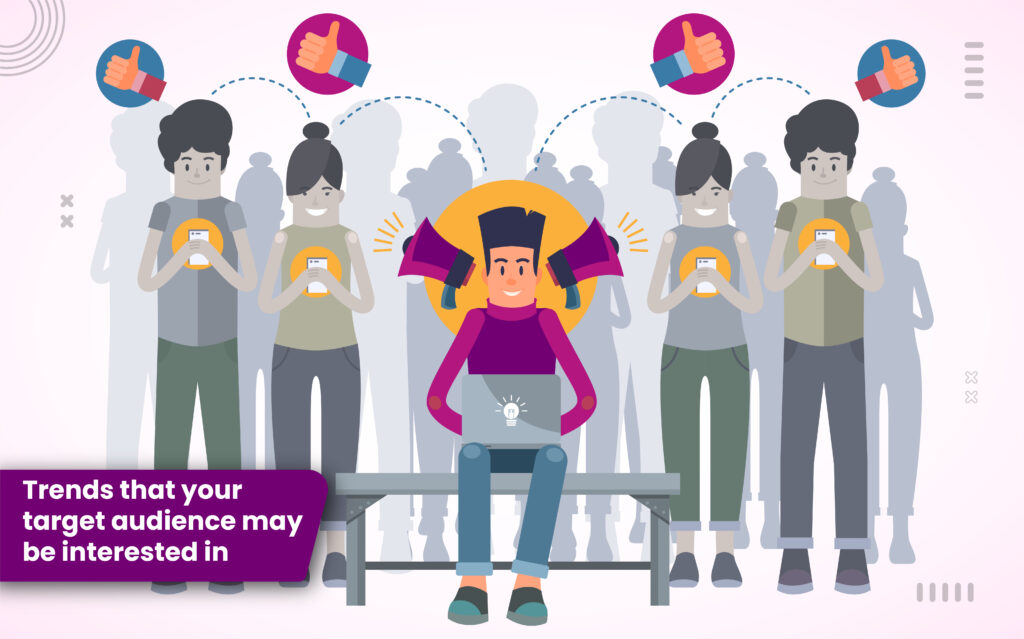How To Use Your Own Emotions To Identify Your Target Audience?

Table of Contents
When you are designing for a target audience, it is important to consider their needs, wants and values. This will help you create a design that appeals to them and meets their needs. Here are some tips on how to design for a particular target audience:
1. Define your target audience.
2. Research your target audience.
3. Develop a design that appeals to your target audience.
4. Test your design with your target audience.
5. Get feedback from your target audience.
6. Test your design with the people who are most likely to use it.
7. Test your design with people who use similar products or services.
8. Test your design with people who don’t use the product or service in question.
- Consider your target audience's age, gender, interests, and lifestyle.

When considering your target audience’s age, gender, interests, and lifestyle, it is important to design with these factors in mind. For example, if you are targeting a younger audience, you will want to use brighter colors and more youthful fonts. If you are targeting an older audience, you will want to use more muted colors and classic fonts. Similarly, if you are targeting a male audience, you will want to use more masculine colors and fonts, whereas if you are targeting a female audience, you will want to use more feminine colors and fonts.
Furthermore, if your target audience has specific interests, such as sports or fashion, you will want to incorporate these interests into your design. Lastly, if your target audience has a particular lifestyle, such as being active or being outdoorsy, you will want to design with this lifestyle in mind. When designing for your target audience, it is important to keep in mind their lifestyle. This can help you to design products that will appeal to them and be relevant to their interests.
For example: if you are designing a website for people who love to shop, you will want to design the site with a fashion-forward look and feel. If you are designing a website for people who enjoy working out, then you will want to design the site with an active theme.
Engage and connect with every customers
- Research your target audience and their needs.

Your target audience is the group of people you want to reach with your product or service. To design for a particular target audience, you need to research their needs.
Who is your target audience? What are their demographics? What do they need from your product or service?
You can use online tools like Google AdWords and Facebook Insights to research your target audience. You can also use surveys and customer interviews to get feedback about their needs.
Once you know what your target audience needs, you can start designing your product or service to meet those needs.
This is called “user-centered design.” It’s a method of research that allows you to build something that people actually want. There are many ways to do this, but here are some questions that can help:
Who is your target audience? What do they want from a product or service like yours? User-centered design is a process that focuses on understanding the needs of your users and designing products or services that meet those needs.
It’s about building things people want, not just what you think they need. This is important because when you’re designing something for yourself, it’s easy to get caught up in the details. You might think: “It would be really cool if this button had a rainbow gradient and pulsed in sync with the beat of my favorite song!” But nobody else cares about that except you and maybe your mom.
User-centered design is based on the idea that you can’t please everyone, so it’s better to focus on a few people who are likely to be your biggest fans. It doesn’t mean that you ignore everyone else, but it does mean that you try to figure out who those fans are and what they want. Once you know this information, build your product or service around it.
- Design with your target audience in mind.

When you’re designing for a particular target audience, it’s important to keep their needs and wants in mind. This means taking into account things like age, gender, lifestyle, interests, and so on. By doing this, you can create a design that will appeal to your target audience and help you achieve your goals. If you’re designing for kids, for example, you might want to include bright colors and fun shapes.
If you’re designing for an older audience, on the other hand, a more sophisticated design that features subtle colors and fine details might be more appropriate. If you’re designing for kids, for example, you might want to include bright colors and fun shapes. A well-designed product is a pleasure for people of all ages to use.
Get a Quote
- Be aware of trends that your target audience may be interested in.

Your target audience is always changing and evolving, so it’s important to be aware of the latest trends that they may be interested in. This can help you to keep your design work relevant and engaging for them.
Some things to consider include:
- What are the current trends in fashion, music, art, etc.?
- How are those trends reflected in popular culture?
- What do your target audience members like to do in their free time?
- What kind of things are they talking about online?
- What kind of things are they talking about online?
- What kind of content do they create?
- Are they posting statuses with links to their site or blog?
- Do they have a large following on social media sites like Sociomee and other platforms?
- What kind of content are these people sharing with their followers?
By keeping up with these trends, you can ensure that your designs will resonate with your target audience and that you’re always creating work that they’ll enjoy.
- Use marketing and advertising strategies that appeal to your target audience.

When you design for a particular target audience, it’s important to use marketing and advertising strategies that appeal to them. This means understanding what they want and need, and then creating content that meets those needs.
One way to do this is to create buyer personas for your target audience. This will help you understand their demographics, motivations, and pain points. With this information, you can create targeted content that speaks directly to them.
Another way to reach your target audience is through market segmentation. This involves dividing your market into smaller groups based on shared characteristics. This allows you to develop more focused marketing and advertising strategies that are tailored to each group.
Finally, consider using psychographic segmentation in your marketing efforts. This looks at factors like lifestyle, values, and personality traits when dividing up your target market. By understanding what makes your audience tick, you can create content that really resonates with them.
Looking to hire freelance graphics designer?
Conclusion
Designing for a target audience is an important skill for any designer to have. By understanding the needs, wants and behaviors of your target audience, you can create designs that are more likely to resonate with them and be successful. Keep these tips in mind the next time you need to design for a specific group of people and you’ll be sure to create something they’ll love.
Quality Service For You
We deliver unique and blended experiences to our customers across the globe. From idea to execution and launch, we do ALL.
Table of Contents
Epic Fantasy App Development Services: Creating Your Digital Worlds


The 25 UX Design Tools That Are Most Popular
Six Typical UX Errors Companies Often Commit
Book Your Consultation Now
Related Post
Epic Fantasy App Development Services: Creating Your Digital Worlds
